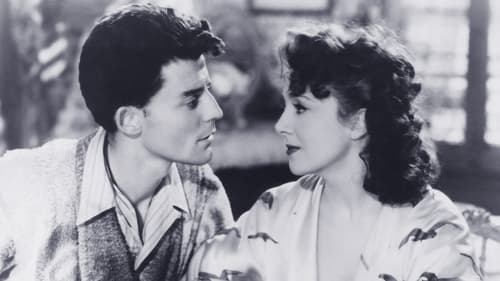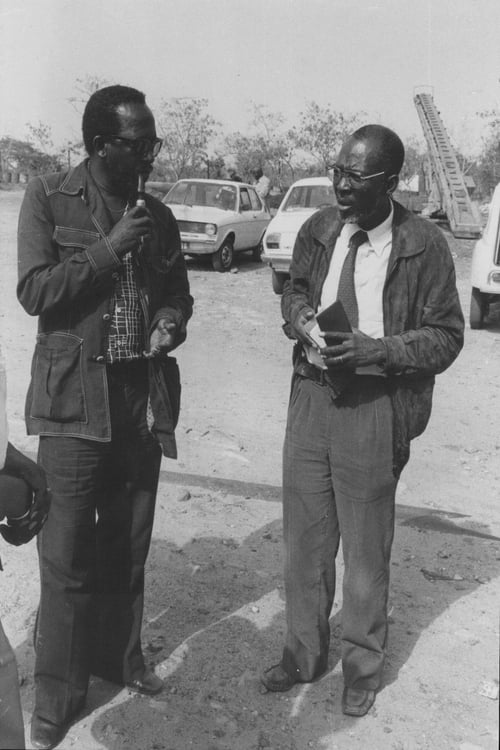Paulin Soumanou Vieyra
Nacimiento : 1925-01-31, Porto-Novo, Benin
Muerte : 1987-11-04
Historia
Benin-born, Senegal-raised filmmaker, theorist, and historian Paulin Soumanou Vieyra was a key figure, as both practitioner and thinker, in the creation and articulation of what a post-colonial African cinema would and could be. Along with producing essential texts like “Film and the Problem of Languages in Africa“ and “Remarks on African Cinema,” founding the important Fédération Panafricaine des Cinéastes, and mentoring the likes of Ousmane Sembène, Djibril Diop Mambéty, and Ababacar Samb-Makharam, Vieyra turned out a vital body of film work, documenting the birth of a new continental consciousness.

Director
During an interview with the filmmaker Paulin Vieyra, the painter Iba Ndiaye recalls key moments of his life. He begins with his childhood in Senegal and his studies at the Lycee Faidherbe in St. Louis of Senegal, where he was drawn to design and graphic arts. African nature and its sweeping horizons remain however his main sources of inspiration.

Director
Directed by Paulin Vieyra.

Director
Birago Diop appears as the pioneer of African letters. He knew the long journey of poets of blackness from the 30s. But, while young writers Antillean and African chose poetry to express the search for their identity, Birago Diop was located from the beginning of his work at the heart of the African literary world, adopting as a mode of expression the tale and the novel. Birago Diop evokes his memories: coming from the old Saint-Louisian bourgeoisie, he made his classes at Faidherbe high school, the first high school of West Africa, before coming to France to study veterinary medicine, an opportunity for him to participate in the first one. core of African Presence. His works are now on the curriculum of high schools in Senegal.

Director
Paulin Vieyra captures Ousmane Sembène, one of the greatest filmmakers of Africa, during the filming of Ceddo. L’Envers du Decor was completed after four years of production. As for Ceddo, it would be censored under the Senghor regime and until 1983 by the Senegalese authorities.

Producer
El rico hombre de negocios El Hadji Abdoukader Beye celebra matrimonio con la tercera de sus esposas. La noche de bodas, para su espanto, descubre que ha caído sobre él la Xala, maleficio que le provoca impotencia sexual. A partir de ahí, la vida de El Hadji es trastornada. De una parte, necesita buscar alguna cura e incluso los negocios comienzan a hundirse.

Production Manager
A young unemployed man fends off accusations of laziness and makes a home for his pregnant girlfriend who has been rejected by her family.

Director
A young fisherman dreams of motorizing his boat to make his work easier. His dream becomes reality, thanks to his courage and his determination but causes conflict between traditional values and the modern notion of progress.

Director

Director
Sindiely tells the story of a greedy father wishing to marry his daughter to a successful fabric merchant, despite her love for another young man. The hostility of the family makes the father yield to his daughter’s wishes, allowing for the young couple to wed.

Director
A hunter dies in a lion's jaws and leaves a wife and two children. The elder child, who is now the only man around the house, is called the little husband. Because of this nickname, he becomes the laughingstock of all the children in the village. Desperate, the child runs away and drowns in the sea. His mother and sister will follow the same fate. The film is based on a story by Birago Diop.

Director
The traditional struggle, known as Lamb in Wolof, which recalls the Greco-Roman struggle, is a popular national sport in Senegal. It has special rules and very strict. Every spectator can bet on his favorite wrestler in a festive atmosphere. The Dakar Arena serves as a showcase for the battles in the film.

Director
Une nation est née depicts the progression of Senegal from colonization to sovereignty, shown allegorically through scenes of dance and celebrations of its newly-reclaimed independence.

This film is widely regarded as the first film made by an African south of the Sahara. Labelled an “ethnological documentary in reverse,” it shows 1950s Paris from the cinematic perspective of a group of African immigrants. (Mubi)

Editor
This film is widely regarded as the first film made by an African south of the Sahara. Labelled an “ethnological documentary in reverse,” it shows 1950s Paris from the cinematic perspective of a group of African immigrants. (Mubi)

Director
This film is widely regarded as the first film made by an African south of the Sahara. Labelled an “ethnological documentary in reverse,” it shows 1950s Paris from the cinematic perspective of a group of African immigrants. (Mubi)

Director
The nostalgia of an African student in Paris for Africa. Graduation film by Paulin Soumanou VIEYRA, one of the pioneers of African cinemas.

Passer-by (uncredited)
Émile Boulard is a props man in a Paris movie studio. He has a wife, Suzanne. Or to be more accurate, let's say he HAD a wife since she left him fifteen years before, allegedly ... to go buy a post stamp. But now that their daughter Martine , who lives with her, is old enough to marry, she resurfaces. She confesses that, in order to explain his absence, she has told Martine her father was a great explorer and lion hunter in Africa. Not to disappoint his daughter, Émile accepts to pose as the adventurer he is supposed to be. At the same time he will help Daniel, Martine's bashful fiancé, not to become a henpecked husband like him.

A passerby (uncredited)
Betrayed by his wife, a teacher proceeds to have an affair with a young and pretty student. The two women both find themselves expecting a child. The girl dies during childbirth. In a spirit of revenge and to keep his real son, the scorned husband exchanges the babies.

Primera Guerra Mundial (1914-1918). Basada en un polémica novela escrita en 1923 por Raymond Radiguet. Narra la relación amorosa entre un adolescente y una joven cuyo marido está en el frente. A pesar de su éxito, tuvo problemas con la censura en varios países. En 1986, el director italiano Marco Bellocchio hizo otra adaptación del mismo título, pero ambientada en los ochenta.




